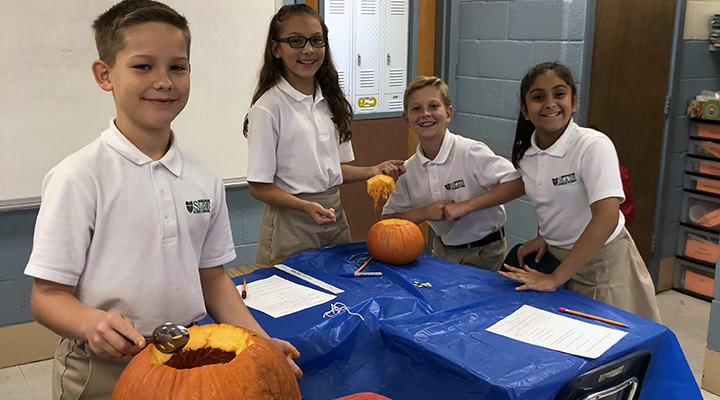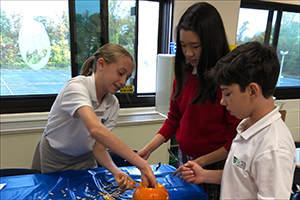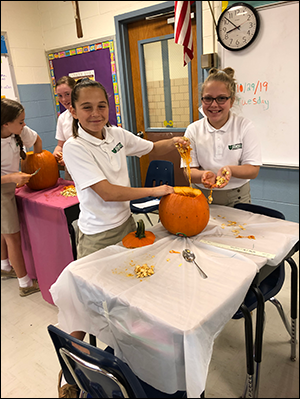
It's a STEAM Halloween!
In science class at Monsignor Slade Catholic School, sixth graders undertook quantitative pumpkin observation. Their goal was to measure the diameter, circumference, weight, the number of creases and the quantity and size of the seeds.

As they observed, the students sought common ratios between the size and weight of the pumpkin; the size of the pumpkin and the number of creases and the size of the pumpkin and the number of seeds.
A Fun Pumpkin "Did You Know?"
- They are a fruit and are 90% water Pumpkins originated in Central America Most parts of a pumpkin are edible; seeds can be roasted, the flower blossoms can be eaten, the flesh is roasted or used for soups, pies, and breads.
- Eighty percent of the pumpkin supply in the United States is available in October.
- In colonial times, Native Americans roasted long strips of pumpkin in an open fire.
- Colonists sliced off pumpkin tops; removed seeds and filled the insides with milk, spices and honey. This was baked in hot ashes and is the origin of pumpkin pie.
- Native Americans flattened strips of pumpkins, dried them and made mats.

- Colonists sliced off pumpkin tops; removed seeds and filled the insides with milk, spices and honey. This was baked in hot ashes and is the origin of pumpkin pie.
- Native Americans flattened strips of pumpkins, dried them and made mats.
- Native Americans used pumpkin seeds for food and medicine.